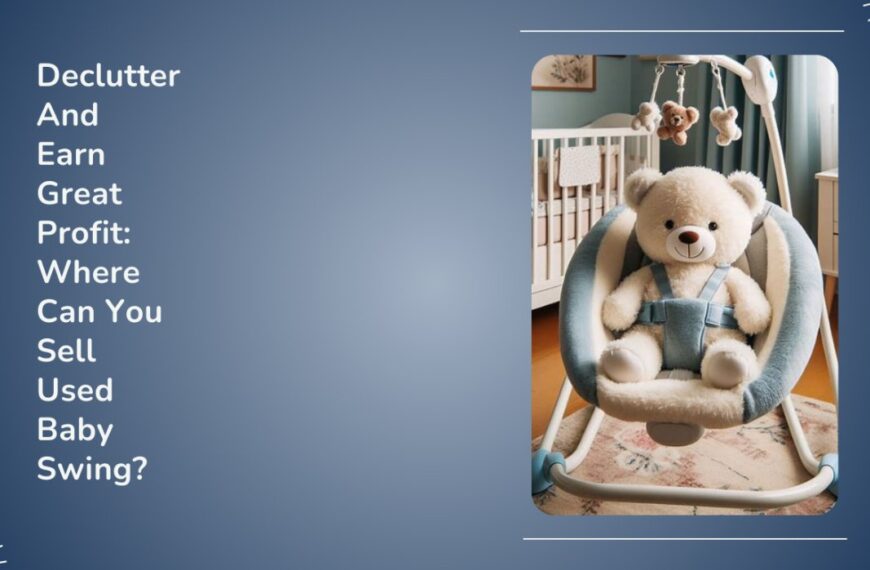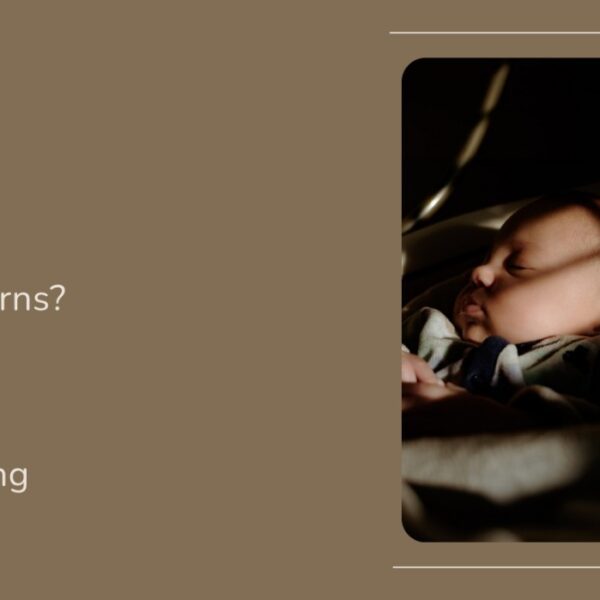As a new parent, it’s very natural to worry about the well-being of your little one.
And it can be difficult to determine which baby products are truly worth the investment and best for your baby’s development when you have so many products in the market.
However, parents often swear by the effectiveness of baby swings in soothing even the fussiest babies, becoming a savior for first-time mothers.
But a common question that bothers many parents is, “Are baby swings bad for development?”
It’s a valid concern and one that deserves an honest answer.
In this article, we’ll dive deep into the subject to thoroughly understand both the benefits and negative implications of using baby swings for your baby’s development.
We’ll also uncover AAP’s (The American Academy of Pediatrics) recommended way to use baby swings to avoid any developmental issues for babies.
So, buckle up, and let’s explore this topic together.
People Also Read: Do Baby Swings Cause Flat Head
Are baby swings bad for Development?
The answer to whether baby swings are bad for Development is not a simple and straightforward one.
Because the answer to this question depends on how you use this gadget.
If you use baby swing for short periods with recommended safety guidelines, baby swings are not bad for Development.
However, if you use a baby swing as a substitute for cribs, let your baby sleep in it or let him stay in it longer than the recommended time.
In that case, it may negatively affect your baby’s development.
The main words to focus on are “Longer than Recommended.”
Overuse of any gadget can be harmful. Same is the case with baby swings.
If you use swing for a short time and follow all recommended safety guidelines, it can surely save you from constantly rocking or swaying your baby to soothe him.
It is generally recommended that babies spend no more than 30 minutes at a time in a swing and no more than 2 hours in a swing per day.
It’s also important to provide babies with plenty of supervised tummy time and time out of the swing to ensure proper development.
To avoid the potential negative effects of baby swings, use them responsibly and follow AAP (The American Academy of Pediatrics) recommended safety guidelines.
By doing so, parents can ensure that their baby benefits from the valuable aspects of a baby swing while avoiding any potential negative effects.
To better understand the impact of baby swings on a baby’s development, it’s extremely important to know both the potential benefits and negative implications associated with their use.
Let’s move on to that!
What negative effects can baby swings cause on Baby’s Development?
Baby swings are excellent in soothing and calming the little ones.
Parents find this product a great helping hand in busy routines.
But it is essential to see the other side of the coin and discuss the potential risks of baby swings when misused for a prolonged time.
Delay in Motor Skills
Using baby swings for excessive time can delay the development of vital motor skills in infants, such as rolling over, sitting up, and crawling.
Babies need opportunities to move and practice physical activity.
It is essential for the development of their muscles and coordination.
Spending too much time in a swing could limit an infant’s ability to practice moving around and exploring their environment.
Delay in Cognitive Development
Spending too much time in a baby swing can limit an infant’s interaction with their environment and the people around them.
Babies need social interaction and stimulation to support their cognitive development, and spending extended periods in a swing could limit these opportunities.
Flat Heads
Newborns have a soft skull that allows baby to pass through the birth canal easily.
However, this also means that their head may become misshapen if it experiences consistent pressure.
If a baby often stays in a baby swing for a long time in the same position, there is a high chance of occurring flattened head in that baby.
Risk of Reliance and Habit-Forming Behavior
While swings can provide a soothing environment for a baby, they may also lead to overstimulation.
Babies who spend too much time in a swing may become overly dependent on the device for comfort and may have trouble self-soothing without it.
Benefits of Baby swings
Baby swings have potential adverse effects from careless use.
However, this soothing device has many benefits for both parents and babies when used correctly and in moderation.
Here are some of the ways that baby swings can be helpful for babies:
Calms Fussy Baby
The gentle motion of a baby swing can help to soothe and calm a fussy or irritable baby, providing much-needed relief to both the baby and the frustrated caregiver.
Encouraging Sensory Stimulation
Many baby swings come with attached toys or mobiles that can help to stimulate a baby’s senses and encourage their cognitive development.
Give Much-Needed Break to Your Arms
Parents often tired up swaying or rocking their babies to soothe them.
A baby swing can give you a break and free up your hands so you can do other things while your baby is enjoying his swing time.
Keeps Baby Entertained
Baby swings come up with plenty of features to keep babies cheerfully distracted and entertained in the swing.
That’s why babies love to spend time in the swing, and parents or caregivers get a sigh of relief for some time.
Helps with Colic
If a baby having no illness cries for hours without any apparent reason is considered colicky.
Baby swings’ vibrations and sweet melodies have a soothing effect on colicky babies and make babies feel better.
Safety Guidelines for using baby swing
Baby swings have come a long way in terms of safety features and design, and they can provide a safe and comfortable place for babies to rest or play.
However, it is crucial for parents to be aware of the safety guidelines recommended by experts to ensure their baby’s safety while using a baby swing.
- Always use the safety straps and ensure they are properly secured around the baby.
- Place the swing on a flat surface and ensure it is stable before placing the baby in it.
- Supervise the baby at all times while in the swing.
- Always follow the manufacturer’s instructions for use and assembly.
- Use the swing for a short time and avoid leaving the baby in it for extended periods.
- Do not place toys, pillows, or loose bedding in the swing with the baby, as they pose a suffocation hazard.
- Go to CPSC (Consumer Product Safety Commission) and confirm that CPSC doesn’t recall your baby swing model.
- Do not use the swing once the baby is able to climb out of it or exceeds the maximum weight or height limit specified by the manufacturer.
- A newborn should use the swing in the most reclined position for at least the first 4 months. It prevents slumping over because a newborn baby has a relatively big head in proportion to their body.
Final Words
Baby swings are safe and not bad for your baby’s development when used in the recommended way and with all safety guidelines.
However, if the baby stays in the swing for a long time or you use the swing as a substitute for cribs even for a bit of time, that can have negative implications for the baby’s development.
In this case, the swing itself is not to blame, but rather those who use it carelessly (without following safety guidelines) for the baby.
So, you must follow safety guidelines while using the swing, as this gadget can be immensely beneficial for both parents and babies.
I hope this blog post helped you to get your answer on “Are baby swings bad for development?”
Now, you know baby swings are not bad for development. New parents might be thinking about the best baby swings for their baby.
Check out the list of best baby swings drafted by our experts.
Related: Best Baby Swing for Small Spaces
Related Blog Posts





